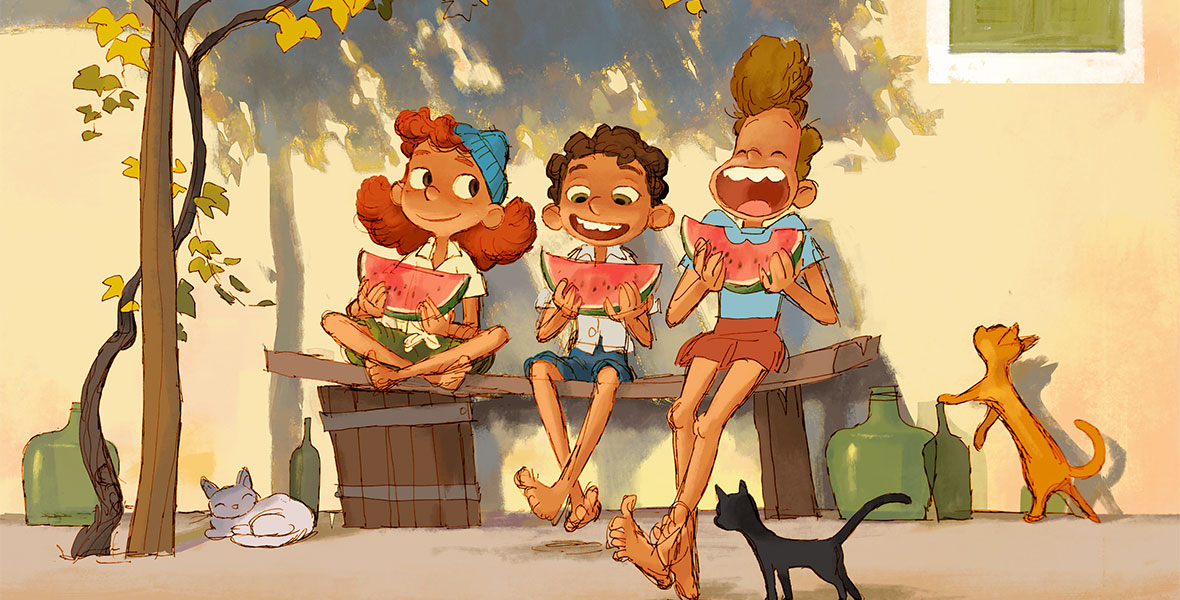Animation is a captivating form of art that has captured the hearts of people across all ages. It brings characters and stories to life, enabling us to experience worlds beyond our own. Behind the mesmerizing visuals and seamless movements lie a set of concepts that form the foundation of animation. In this article, we will explore the key concepts used in animation, shedding light on the techniques and principles that make animated creations come alive.

The Role of Keyframes in Animation
Keyframes play a crucial role in the animation process. They mark significant points in an animation where the position, rotation, and scale of an object are defined. By setting keyframes at different intervals, animators can create smooth and realistic movements. These keyframes act as anchor points that guide the animation software in generating the in-between frames, resulting in fluid motion.
The Principle of Squash and Stretch

Squash and stretch is a fundamental concept used in animation to add a sense of weight, flexibility, and realism to objects and characters. By exaggerating the squash and stretch of an object during movement, animators can emphasize the impact or exaggerate the elasticity of materials. This principle breathes life into animations, making them more dynamic and visually appealing.
The Power of Timing and Spacing

Timing and spacing are critical elements in animation that affect the overall rhythm and flow of movement. Timing refers to the duration of an action, while spacing refers to the distance an object or character travels between keyframes. By manipulating timing and spacing, animators can create different effects, such as slow-motion or fast-paced sequences. Mastering this concept enables animators to control the pace and intensity of their animations.
The Use of Anticipation

Anticipation is an essential concept in animation that adds realism and anticipation to actions. It involves preparing the audience for an upcoming action by using subtle movements or poses. For example, before a character jumps, there might be a slight crouch or a backward movement to indicate the impending action. Anticipation helps create a more immersive experience, allowing the audience to anticipate and engage with the animation.
The Principle of Follow-Through and Overlapping Action

Follow-through and overlapping action are techniques used to add natural motion and secondary movements to characters and objects. Follow-through refers to the continuation of movement after the primary action has ceased, while overlapping action involves different parts of a character or object moving at different rates. By incorporating follow-through and overlapping action, animators can create animations that feel organic and lifelike.
The Concept of Arcs in Animation

Arcs are an important principle used in animation to mimic the natural movement of objects and characters. Most actions follow a curved trajectory rather than a straight line. By animating objects along an arc, animators can replicate the fluidity and realism of real-life motion. Arcs are commonly used in character animations, such as walking, running, or throwing, to create smooth and believable movements.
The Influence of Exaggeration

Exaggeration is a concept used in animation to emphasize emotions, actions, and characteristics. By exaggerating movements, expressions, or proportions, animators can convey a stronger message or evoke specific emotions from the audience. Exaggeration allows for creative interpretation and adds an element of interest and appeal to the animation.
The Importance of Staging

Staging refers to the presentation of an idea or action in a clear and visually appealing manner. It involves arranging elements within the animation to effectively communicate the intended message. Proper staging ensures that the audience’s attention is focused on the most critical elements and helps convey the story or concept more effectively.
The Use of Straight Ahead and Pose-to-Pose Animation
Straight ahead animation and pose-to-pose animation are two distinct approaches used in creating animations. Straight ahead animation involves animating frame by frame from start to finish, resulting in a more spontaneous and free-flowing animation style. On the other hand, pose-to-pose animation involves creating keyframes at significant poses and then adding in-between frames. This approach provides more control and precision over the animation’s timing and movement.
The Principle of Solid Drawing

Solid drawing is a concept in animation that focuses on creating characters and objects with a sense of volume and three-dimensionality. It involves understanding the principles of anatomy, weight, and perspective to give the illusion of solidity and depth. Solid drawing enhances the believability of characters and objects, making them feel more tangible and realistic.
The Role of Appeal in Animation

Appeal is an essential concept in animation that refers to the attractiveness and charm of characters, designs, or animations. Creating appealing animations involves striking a balance between aesthetics, personality, and relatability. Animators strive to make characters and animations visually appealing to capture the audience’s attention and create a lasting impression.
The Concept of Secondary Action

Secondary actions are additional movements that support and enhance the primary action in an animation. They add depth and complexity to animations by providing supplementary movements that complement the main action. Secondary actions can include gestures, facial expressions, or other movements that contribute to the overall narrative or visual impact.
The Use of Color and Lighting
Color and lighting play a significant role in setting the mood, atmosphere, and tone of an animation. They evoke emotions, convey information, and enhance the visual experience. Animators utilize color theory and lighting techniques to create compelling visuals that enhance the storytelling and evoke specific responses from the audience.
The Importance of Storytelling in Animation
At its core, animation is a medium of storytelling. The concepts mentioned above are all essential tools that aid in conveying narratives, emotions, and messages through animated visuals. Animation allows storytellers to bring their imagination to life, transcending the boundaries of reality and capturing the hearts and minds of viewers.
Frequently Asked Questions (FAQs)
What software is commonly used for animation?
The animation industry relies on a variety of software tools for creating animations. Some popular animation software includes Adobe Animate, Toon Boom Harmony, Autodesk Maya, and Blender. These software packages provide a range of features and capabilities that enable animators to bring their ideas to life.
Is animation limited to a specific genre?
No, animation is not limited to a specific genre. It encompasses a wide range of styles and genres, including traditional hand-drawn animation, computer-generated imagery (CGI), stop motion, and more. Animation can be found in feature films, television shows, commercials, video games, and even educational content.
How long does it take to create an animated film?
The time required to create an animated film varies depending on various factors, such as the complexity of the animation, the size of the production team, and the desired quality. Creating a full-length animated film can take several months to several years, as it involves various stages, including concept development, storyboarding, animation, rendering, and post-production.
Can animation be a career?
Absolutely! Animation offers exciting career opportunities for individuals passionate about storytelling and visual arts. Animators can work in animation studios, film production companies, advertising agencies, video game studios, and even as freelance artists. With the growing demand for animated content in various industries, pursuing a career in animation can be both fulfilling and rewarding.
What skills are essential for a career in animation?
To excel in the field of animation, several skills are essential. These include a strong foundation in art and design principles, proficiency in animation software, storytelling abilities, time management skills, and the ability to work collaboratively in a team. Additionally, a willingness to learn and adapt to new technologies and techniques is crucial in this ever-evolving field.
How does animation impact society?
Animation has a significant impact on society in various ways. It entertains and engages audiences of all ages, providing a form of escapism and inspiration. Animation also serves as a powerful educational tool, simplifying complex concepts and making learning more accessible. Furthermore, animation has the ability to shape opinions, raise awareness about social issues, and foster cultural understanding.
Conclusion
Animation is a captivating art form that brings imagination to life. By understanding and utilizing the concepts mentioned in this article, animators can create animations that resonate with audiences on a profound level. From keyframes to squash and stretch, timing to anticipation, each concept contributes to the magic of animation. As technology advances and new techniques emerge, the possibilities in animation continue to expand, allowing creators to push the boundaries of storytelling and visual expression.
Thank you for visiting Animaders! If you enjoyed this content, please consider liking and subscribing to our website for more amazing content. Your support helps us create even more great content and keep Animaders growing. Thanks again!

Leave a Reply